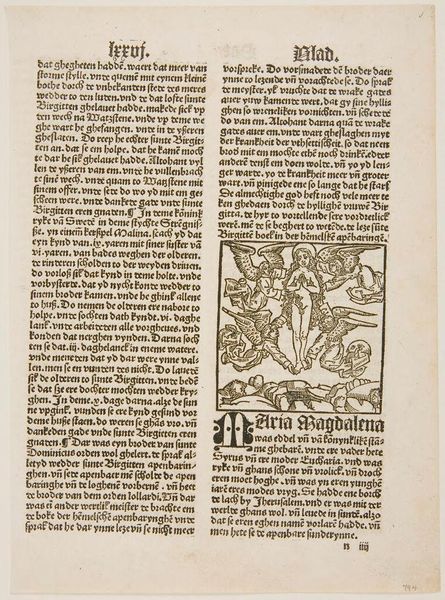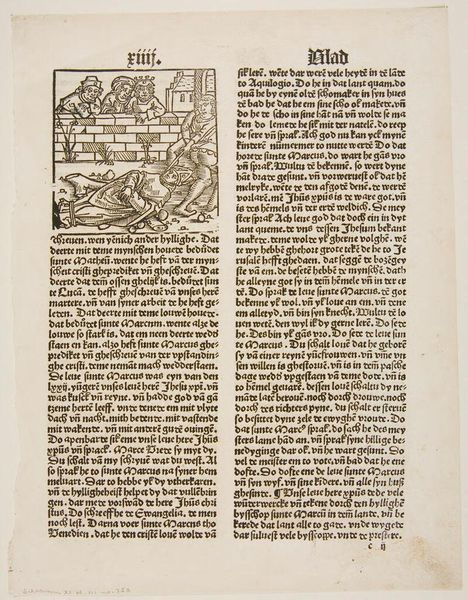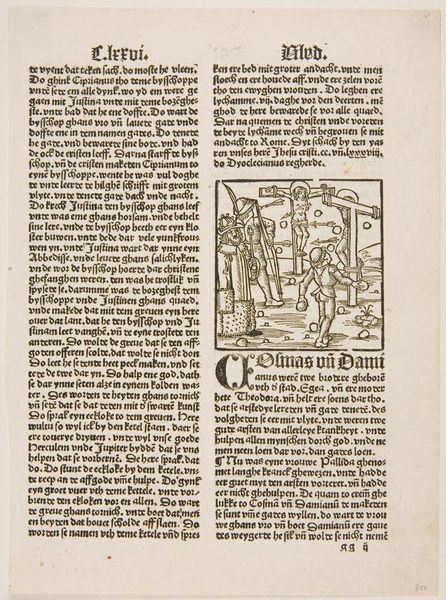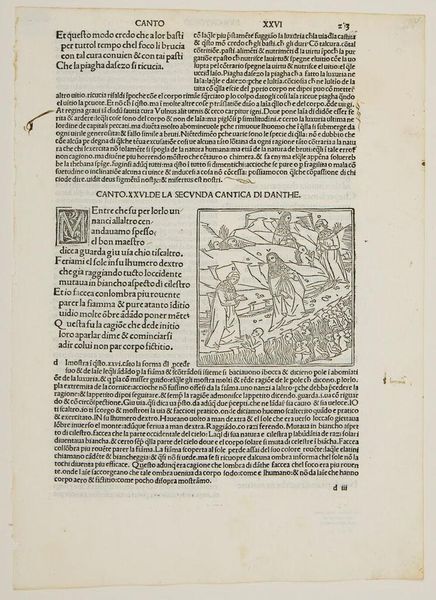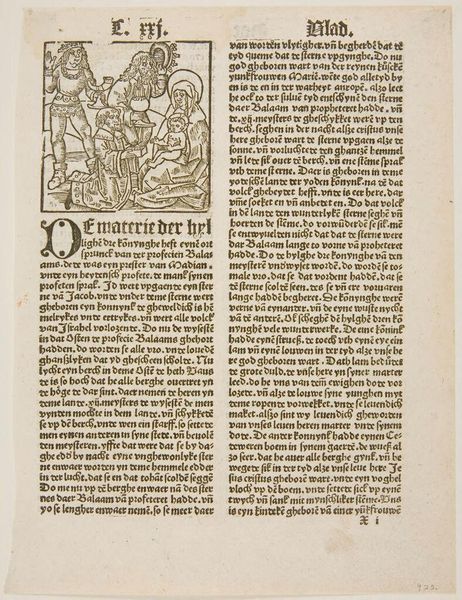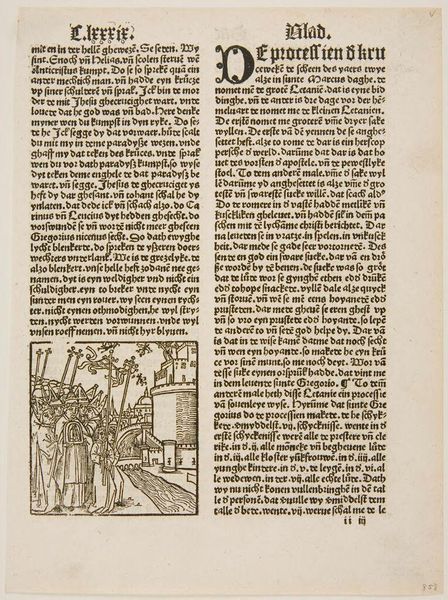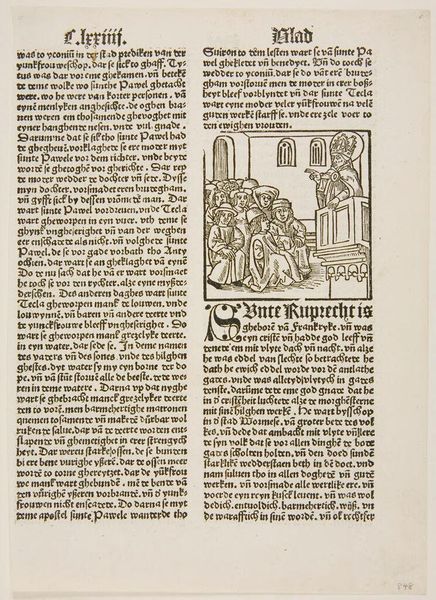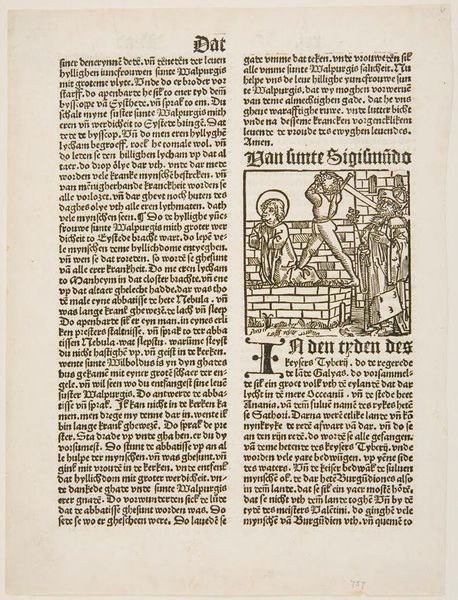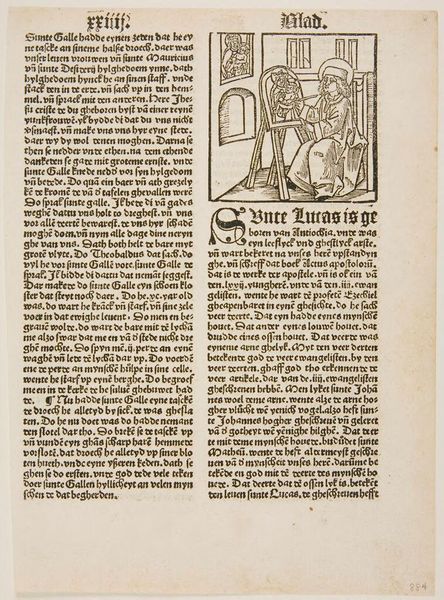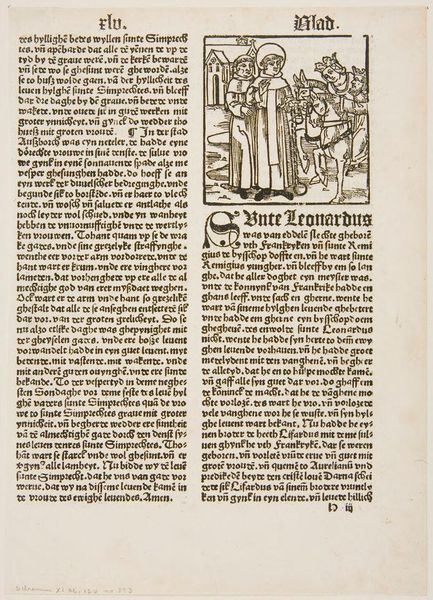
Copyright: CC0 1.0
Curator: This is a woodcut, simply titled "Battle for the City of Lubeck." Though the artist is anonymous, we can still appreciate the level of detail considering the technique. What's your initial reaction to it? Editor: Dark. Claustrophobic, even. The figures are crowded together, the lines are sharp and unforgiving, and the text looming above and below seems to box everything in. Curator: Indeed. The composition is dense. I see the clash of armies, with spears and banners raised high. There's a certain chaos, but also a visual language that tells a story beyond the immediate battle. Editor: I'm drawn to how the artist uses light and shadow to create a sense of depth amidst that chaos. It adds to the drama, emphasizing the struggle for power and control visually. Curator: And the symbols themselves—the flags, the armor, the arrangement of figures. They speak to the beliefs and aspirations of the time, mirroring larger cultural narratives about heroism, conquest, and religious faith. Editor: It makes me think about how battles are always more than just physical conflict. They're clashes of ideologies, struggles for identity, and, of course, lucrative power grabs. This piece seems to capture some of that complexity, even in its limited space. Curator: Right. It is interesting to consider how an image of conflict can hold so many layers of meaning when we look through the lens of historical context. Editor: Absolutely. And, ultimately, that is why art endures, because it invites us to question and reconsider the world around us.
Comments
No comments
Be the first to comment and join the conversation on the ultimate creative platform.
